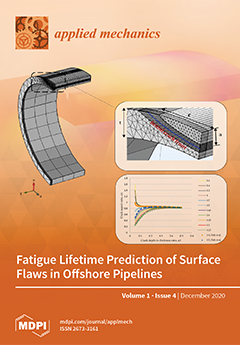Digital image correlation (DIC) systems have been used in many engineering fields to obtain surface full-field strain distribution. However, noise affects the accuracy and precision of the measurements due to many factors. The aim of this study was to find out how different
[...] Read more.
Digital image correlation (DIC) systems have been used in many engineering fields to obtain surface full-field strain distribution. However, noise affects the accuracy and precision of the measurements due to many factors. The aim of this study was to find out how different filtering options; namely, simple mean filtering, Gaussian mean filtering and Gaussian low-pass filtering (LPF), reduce noise while maintaining the full-field information based on constant, linear and quadratic strain fields. Investigations are done in two steps. First, linear and quadratic strain fields with and without noise are simulated and projected to discrete measurement points which build up strain window sizes consisting of
,
, and
points. Optimal filter sizes are computed for each filter strategy, strain field type, and strain windows size, with minimal impairment of the signal information. Second, these filter sizes are used to filter full-field strain distributions of steel samples under tensile tests by using an ARAMIS DIC system to show their practical applicability. Results for the first part show that for a typical
strain window, simple mean filtering achieves an error reduction of 66–69%, Gaussian mean filtering of 72–75%, and Gaussian LPF of 66–69%. If optimized filters are used for DIC measurements on steel samples, the total strain error can be reduced from initial 240−300
strain to 100–150
strain. In conclusion, the noise-floor of DIC signals is considerable and the preferable filters were a simple mean with
= 2, a Gaussian mean with
= 1.7, and a Gaussian LPF with
= 2.5 in the examined cases.
Full article





